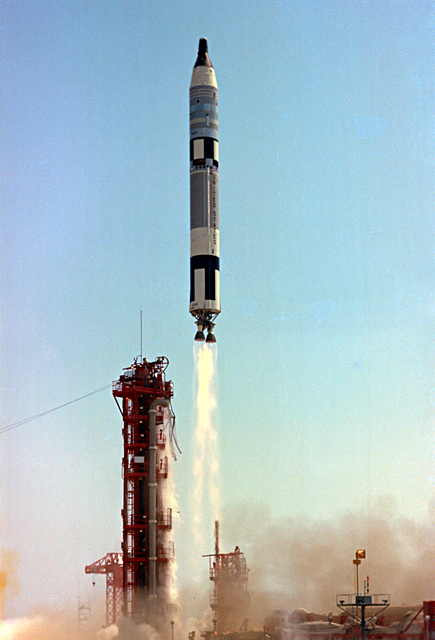Discovery is ten minutes away from landing here at KSC as I start writing this. Through the walls of the HQ building I have heard the jet rumble of the Shuttle Training Aircraft, a modified Gulfstream 5, which flies the route before landing to visually check on weather conditions. Specially equipped with flight-deployable air breaks it can 'hang' and drop in the same landing approach as the orbiter. The shuttle itself drops faster and steeper than a normal aircraft, so training orbiter pilots demands a novel test vehicle.
Here I go outside. More in a minute....
BOOM! BOOM!
And by the time I'm back at my desk, the orbiter is wheels stopped on Runway 33. A beautiful sight, as this approach brought the orbiter almost directly over HQ. Orbiter and crew now safe and sound on Terra Frima.
A few things to know about these events (and there are only three more left, so listen up!):
The two sonic booms are produced by shock waves emanating from the orbiter nose and tail.
After the booms, you can hear the sound of the orbiter cutting through the air, and possibly the APUs (auxillary power units). Which is what the booms are: the compressed sound waves of all the soundthat would normally precede the orbiter (this is a very rudimentary explaination).
The STA follows a minute behind the orbiter.
While thousands of people may come to the center to watch a launch, only a few hundred are invited to the landing site. The viewing area is close enough that, if hypergolic fuel is leaking from a valve in the reaction control system, evacuation must be immediate. Busses are left running in case of this emergency. It is also why you see the first responders dressed in the full emergency suits with airpacks.
Technically speaking, the orbiter does not 'fly' or 'glide' until the last 30 seconds or so when the nose elevates above the horizontal.. That is when the wings start producing lift. Everything before that is a 'controlled descent', or what my friend Buzz Lightyear refers to as "Falling with style!"
The drag produced by the creation of lift also rapidly drops the airspeed, threatening a stall. The art is to hold off the stall until touchdown on the runway.
Runway 33 and Runway 15 are the same runway. The numbers indicate the approach heading, 33 toward the north at heading 330º, and 15 toward the south at heading 150º.
Time to end this and post while it is still timely. While launches are magnificent, landings are exquisite. I would almost prefer to watch a landing. Guess I'll have to figure out how to get a ride with the Navy for the future.





